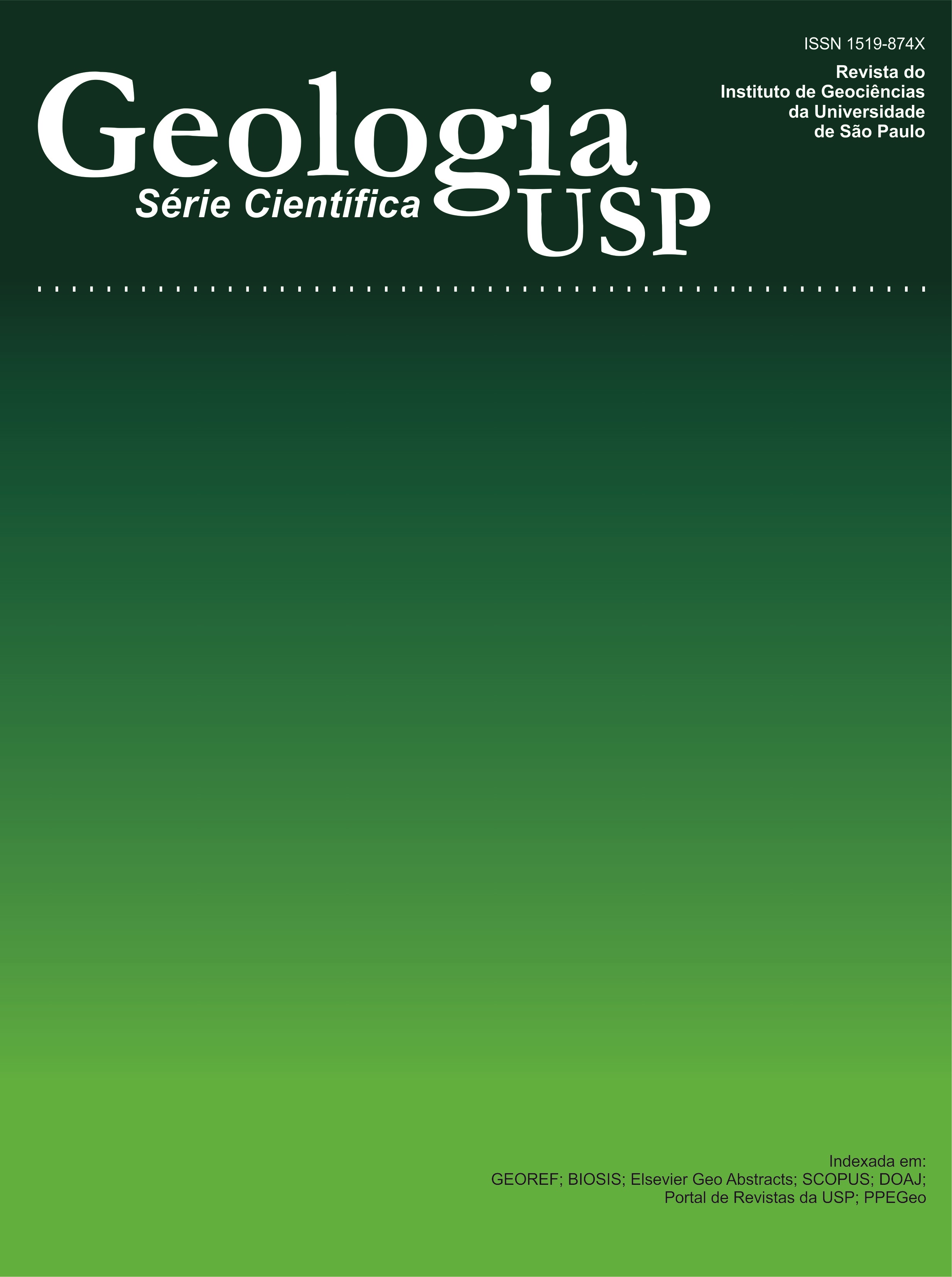Caracterização cinemática de uma zona de cisalhamento transcorrente de direção NNE marcada na evolução de seu magmatismo granítico sintectônico na região de Camboriú, SC
DOI:
https://doi.org/10.5327/Z1519-874X201400030005Resumo
O Granito Corre-mar (GCM) localiza-se na região de Itapema-Camboriú, Santa Catarina, extremo nordeste do Cinturão Dom Feliciano. Uma zona de cisalhamento subvertical de direção NNE controla seu posicionamento, gerando um par S-C subvertical com cinemática sinistral. A foliação S (magmática), de direção NE-SW, é dada principalmente pela orientação de feldspatos e xenólitos, enquanto a foliação C (cisalhamento), de direção NNE-SSW, é marcada pelo estiramento dos cristais e formação de caudas de recristalização assimétricas nos feldspatos. Nas rochas encaixantes, próximo aos contatos, desenvolvem-se zonas de deformação de baixa temperatura paralelas à foliação C local do GCM. Os corpos do GCM têm uma sistemática variação na espessura, onde zonas mais largas mostram as foliações menos desenvolvidas. Microestruturas indicativas de deformação progressiva em temperatura decrescente são representadas por subgrãos em padrão tabuleiro de xadrez no quartzo e textura granoblástica em K-feldspato, as quais são superpostas por estruturas de mais baixa temperatura, como recristalização fina do quartzo, selamento de fraturas dos cristais maiores de feldspato por material da matriz finamente recristalizada e neoformação de grãos finos ao redor dos cristais de feldspato. A integração dos dados estruturais e petrológicos indica que o GCM se posicionou quando a zona de cisalhamento NNE estava ativa, e sua geometria indica uma componente de abertura na direção NE, típica de regime transtrativo. A estrutura transtrativa é compatível com sua posição em zona de baixa deformação transcorrente do Cinturão de Cisalhamento Sul-brasileiro, situada entre as zonas de mais alta deformação representadas pela zonas de cisalhamento Major Gercino e Itajaí, ativas no estágio pós-colisional do Ciclo Brasiliano no sul do Brasil.Downloads
Os dados de download ainda não estão disponíveis.
Publicado
2014-09-01
Edição
Seção
Artigos
Licença
Autores que publicam nesta revista concordam com os seguintes termos:
- Autores mantém os direitos autorais e concedem à revista Geologia USP. Série Científica, o direito de primeira publicação, com o trabalho sob a licença Creative Commons BY-NC-SA (resumo da Licença: https://creativecommons.org/licenses/by-nc-sa/4.0 | texto completo da licença: https://creativecommons.org/licenses/by-nc-sa/4.0/legalcode) que permite o compartilhamento do trabalho de forma não comercial e conferindo os devidos créditos autorais da primeira publicação nesta revista.
- Autores têm autorização para assumir contratos adicionais separadamente, para distribuição não-exclusiva da versão do trabalho publicada nesta revista (publicar em repositório institucional ou como capítulo de livro), conferindo os devidos créditos autorais da primeira publicação nesta revista.
- Autores têm permissão e são estimulados a publicar e distribuir seu trabalho online (em repositórios institucionais ou na sua página pessoal) a qualquer ponto antes ou durante o processo editorial, uma vez que isso pode gerar alterações produtivas, bem como aumentar o impacto e a citação do trabalho publicado (Veja O efeito do Acesso Aberto e downloads no impacto das citações).
Como Citar
Martini, A., & Bitencourt, M. de F. (2014). Caracterização cinemática de uma zona de cisalhamento transcorrente de direção NNE marcada na evolução de seu magmatismo granítico sintectônico na região de Camboriú, SC . Geologia USP. Série Científica, 14(3), 61-74. https://doi.org/10.5327/Z1519-874X201400030005















